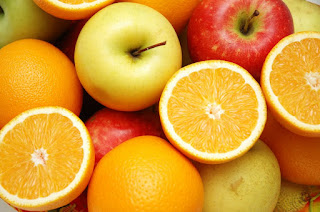Week 9: How The Drone Net Works - Software Pt. 3 - Machine Learning
Hello Everyone! During this week, the Professor and I planned out a few hardware changes for the Drone Net. We will work on these modifications next week, so stay tuned for the updates.
This week, I would like to hopefully conclude my discussion of the software side of the Drone Net.
Note: In reality, this matrix will contain thousands of images of apples and oranges, each labelled with their proper identity.
Let's say that we want to test the lime picture again. We would only need to feed a few images of limes into the program and the software would determine the best way to differentiate between the other fruits and limes. In other words, the computer would "learn what a lime is", and we would teach it using examples.
Machine learning is extremely powerful and accurate, compared to the simple method of programming. Using this learning system becomes extremely necessary when the test data grows more complex, like when a drone flies through the sky.
The reason we do manual checks on Drone Net is to produce a set of examples for the software to use when learning what a drone "is."
Next week, I will explain the long-term design features and goals of drone net.
This week, I would like to hopefully conclude my discussion of the software side of the Drone Net.
Why perform manual checks, if the Drone Net is designed to classify aerial objects by itself?
The answer is straightforward, but requires some explanation. Machine learning is a basic form of artificial intelligence and is the reason that manual checks of Drone Net's output are required.
Machine learning is just what it sounds like, a way for machines to 'learn.' Any text in this font will be "code," that the computer will interpret.
For example, let's say we wanted to write a program to tell the difference between oranges and apples in this picture:
The Simple Way:
- Load the picture
- Search pixel by pixel for colors
- Lots of orange pixels = "Orange"
- Lots of red pixels = "Red Apple"
- Lots of green pixels = "Green Apple"
The simple way has a few problems though. If we gave the program a picture of apples, oranges and limes, the program would classify the limes as green apples. Unfortunately, this problem can only we solved if we know a surefire way to know the difference between green apples and limes. Then, we would have to program several additional steps to determine whether the "green pixels" are green apples or limes.
With the machine learning method, we feed the program a set of examples of the items we are trying to classify.
The Machine Learning Way:
- Load the picture
- Reference this matrix* of examples
- Derive a complex function using the set of images
- Apply the function to the test picture
 |
| Green Apple |
 |
| Orange |
Note: In reality, this matrix will contain thousands of images of apples and oranges, each labelled with their proper identity.
Let's say that we want to test the lime picture again. We would only need to feed a few images of limes into the program and the software would determine the best way to differentiate between the other fruits and limes. In other words, the computer would "learn what a lime is", and we would teach it using examples.
Machine learning is extremely powerful and accurate, compared to the simple method of programming. Using this learning system becomes extremely necessary when the test data grows more complex, like when a drone flies through the sky.
The reason we do manual checks on Drone Net is to produce a set of examples for the software to use when learning what a drone "is."
Next week, I will explain the long-term design features and goals of drone net.





Comments
Post a Comment